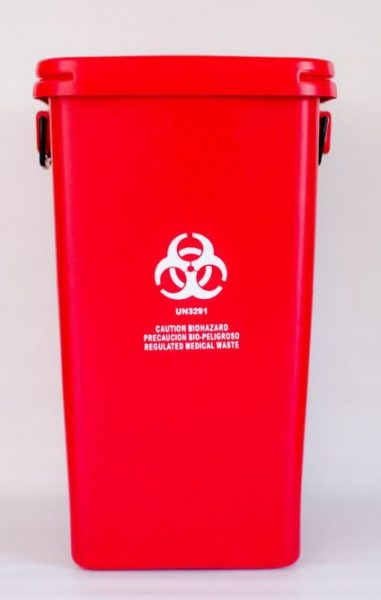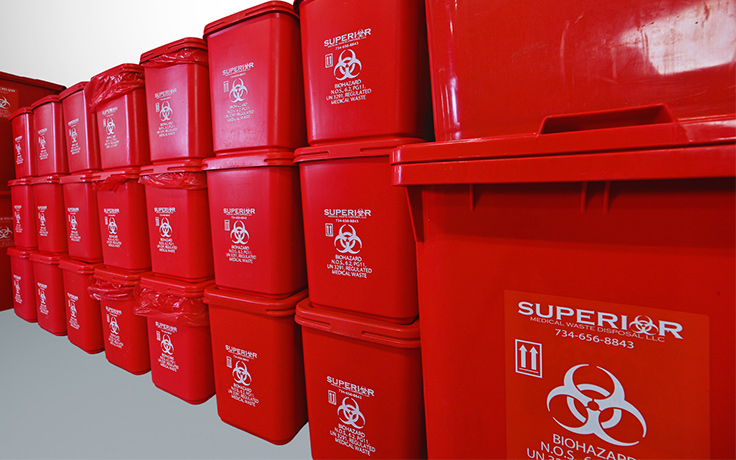Proactive Wellness Solutions: Picking the Best Medical Waste Removal Near You
Proactive Wellness Solutions: Picking the Best Medical Waste Removal Near You
Blog Article
Stay Ahead of Rules: Expert Recommendations on Medical Garbage Disposal
In a world where the health care market is frequently evolving, it is critical for medical centers to remain in advance of regulations when it concerns the appropriate disposal of clinical waste. With rigorous standards and constant regulatory changes, it can be challenging to navigate the complexities of this process. With expert advice, facilities can ensure conformity and mitigate risks associated with incorrect waste disposal. From comprehending the various groups of clinical waste to carrying out the ideal collection and segregation methods, this discussion will certainly give actionable tips and beneficial understandings to assist facilities remain in advance of guidelines in the ever-changing landscape of medical waste disposal.
Understanding Clinical Waste Categories
Understanding clinical waste categories is crucial for appropriate disposal and management in health care facilities. Clinical waste describes any type of waste created by health care tasks that may present a threat to public wellness or the environment. It is vital to categorize medical waste properly to ensure its risk-free handling, disposal, treatment, and transport.
There are a number of groups of medical waste that health care centers require to be accustomed to. One of the most usual categories include contagious waste, pathological waste, sharps waste, pharmaceutical waste, and chemical waste. Each group has specific guidelines and guidelines for its correct management and disposal.
Contagious waste includes products infected with blood or various other physical fluids, such as gloves, gowns, and lab societies. Pathological waste describes human cells, body organs, or body components that require special handling and disposal. Sharps waste includes utilized needles, syringes, and other sharp items that can trigger injury and transfer infections. Pharmaceutical waste makes up run out, unused, or polluted medications that need mindful handling and disposal. Chemical waste includes solvents, disinfectants, and other chemical substances used in healthcare facilities.
Remaining Up-To-Date With Regulatory Adjustments
Remaining existing with governing modifications is crucial for healthcare centers to make certain conformity and appropriate administration of medical garbage disposal. medical waste removal near me. With laws frequently advancing, it is crucial for medical care facilities to stay current to stay clear of penalties, penalties, and prospective harm to the setting and public health and wellness
To stay in advance of regulative changes, medical care centers ought to develop a system for tracking and tracking updates. This can be done by registering for regulative newsletters, participating in seminars and workshops, and proactively taking part in sector associations. Additionally, centers should mark a personnel or team responsible for remaining notified and disseminating information to appropriate stakeholders.
Routine communication with governing companies is likewise important. Health care centers need to establish partnerships with neighborhood, state, and federal companies to guarantee they recognize any kind of modifications in laws that may affect their waste monitoring practices. This can be done with normal meetings, involvement in public remark periods, and positive involvement with regulatory companies.
Additionally, medical care centers should take into consideration partnering with waste administration firms that focus on clinical waste disposal (medical waste disposal services with WasteX). These companies are typically fluent in the most recent policies and can give guidance and support to guarantee compliance
Carrying Out Correct Collection and Partition Methods
To efficiently handle medical waste disposal, health care centers must establish appropriate collection and segregation techniques based on regulative standards. Carrying out these techniques makes sure the secure handling and disposal of possibly harmful products, secures the atmosphere, and lessens the danger of injuries and infections to medical care employees and the basic public.
Appropriate collection and partition techniques involve making use of designated containers and labeling systems. Healthcare centers need to give plainly identified containers for different sorts of medical waste, such as sharps, contagious waste, pharmaceutical waste, and non-hazardous waste. These containers should be color-coded and plainly marked to avoid confusion and advertise simple identification.
In addition, health care facilities need to educate their staff on the correct treatments for gathering and segregating clinical waste. This consists of educating them on the various kinds of waste, the suitable containers to make use of, and the relevance of complying with laws and guidelines. Regular training sessions and correspondence course should be performed to guarantee that personnel remain current on finest practices.
In addition, health care centers ought to develop a system for routine collection and disposal of medical waste. This may involve partnering with accredited waste management companies that focus on clinical waste disposal. These firms will certainly guarantee that investigate this site the accumulated waste is moved and gotten rid of in conformity with governing needs.
Selecting the Right Disposal Approaches

Incineration is just one of one of the most effective and common methods for dealing with specific kinds of clinical waste, such as pathological waste and sharps. It includes the regulated burning of waste at heats, lowering it to ash. Incineration can release hazardous pollutants into the air and contribute to air contamination.

Other disposal approaches include chemical therapy, microwave therapy, and landfilling. Chemical treatment entails the use of chemicals to disinfect and counteract the waste. Microwave treatment makes use of microwave energy to heat and decontaminate the waste. Landfilling includes hiding the waste in an assigned landfill location (medical waste disposal services with WasteX). Landfilling should be the last resort due to the prospective risk of contamination to soil and groundwater.
Making Certain Conformity Through Documents and Training
After very carefully considering the ideal disposal approaches for clinical waste, health care centers must ensure compliance with policies and reduce environmental impact by executing effective documentation and training procedures. This step is essential in maintaining a lasting and secure setting for both medical care employees and the basic public.

Training is just as important in making sure conformity with policies. Medical care employees who take care of clinical waste must obtain suitable training on waste partition, taking care of, and disposal treatments. This training ought to cover subjects such as the proper usage of individual safety devices, recognition of different types of waste, and the correct disposal approaches for each waste group. By offering detailed training, medical care centers can empower their personnel to make educated choices and decrease the threat of improper waste disposal.
Conclusion
In conclusion, staying in advance of regulations in clinical garbage disposal is crucial for healthcare centers. medical waste removal. Understanding the various groups of clinical waste, remaining updated with regulatory modifications, carrying out appropriate collection and segregation methods, picking the ideal disposal approaches, and ensuring compliance via paperwork and training are all vital steps. By adhering to these standards, health care companies can properly get rid of and handle of medical waste in a safe and liable fashion
From comprehending the different groups of medical waste to implementing the right collection and partition techniques, this discussion will certainly supply useful insights and workable ideas to aid facilities remain ahead of regulations in the ever-changing landscape of this link clinical waste disposal. - medical waste disposal services with WasteX
The most common groups consist of contagious waste, pathological waste, sharps waste, pharmaceutical waste, and chemical waste. Medical care facilities must supply plainly classified containers for different types of clinical waste, such as sharps, infectious waste, pharmaceutical waste, and non-hazardous waste. Healthcare facilities must develop a thorough system to record and track all view it aspects of medical waste disposal, including types of waste generated, quantities, and disposal methods utilized. Health care workers who deal with medical waste ought to get suitable training on waste segregation, managing, and disposal procedures.
Report this page